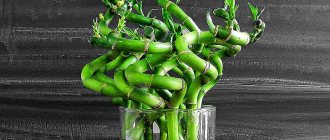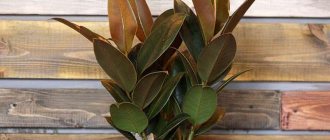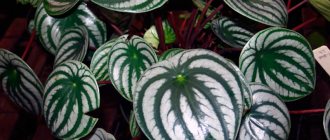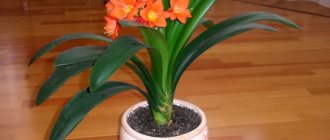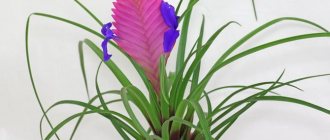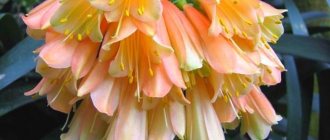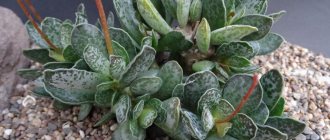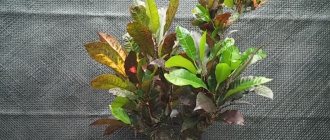Indoor bamboo is Sander's dracaena (Dracaena brauniic). Dracaena Sandera is a plant with a leafy or bare hollow stem, its shade is green or yellow-green. Naturally, the stem grows erect, but it can be twisted artificially, creating interesting compositions (spirals, lattices, etc.). The leaf blades are oblong, with pointed tips, rich green in color, located along the stem or collected at its top.
Subject to simple care rules, decorative bamboo can grow indoors for a long time. It is necessary to provide an environment as close as possible to the natural habitat.
How to properly grow bamboo at home photo
Decorative bamboo is unpretentious in care. An evergreen exotic plant will be a wonderful addition to a home or office interior and will help to maintain a Japanese-style room. Decorative bamboo can be grown in substrate or water. Regardless of the method of cultivation, Sandera's dracaena will delight you with its decorative qualities. This gives ample opportunities in choosing a container, which allows you to complement the interior in an original way. Rapid growth rates make it possible to create a cozy tropical corner or decorate a work area in a short time.
Distinctive features
This plant has a rather unusual appearance. Despite its name, the indoor bamboo used in the design is actually a type of dracaena. Bamboo at home (the photo demonstrates this) looks quite attractive. It grows equally well both in soil and in ordinary water. It has a bare stem of a rich green hue. There are leaves at the top of the plant. Home interiors are often decorated with spiral-shaped bamboo, whose shoots grow in zigzags. According to Eastern mythology, this plant can bring good luck in any endeavor. It is not for nothing that spiral bamboo is called the tree of happiness. How to grow bamboo at home?
Bamboo varnishes from seeds at home
Dracaena sandera propagates by seeds, and if you managed to get them, it's time to get a lot of lucky bamboo seedlings.
- To grow Dracaena sandera seedlings, it is preferable to take leaf soil and mix it with sand, and lay a drainage layer on the bottom of the container. This way you will be sure that young plants will not be affected by rot.
- The seeds are large enough to plant them one at a time in the cells of a seedling cassette, and then transfer them into larger cups.
Bamboo dracaena from seeds at home photo of seedlings
- If there is not enough space on the windowsill, you can sow it in a container for seedlings, and carefully plant the grown plants in separate cups, trying to hook them with a fork along with the earthen lump. When planting seeds in a container, maintain a minimum distance between seedlings of 3-4 cm.
- Seed placement depth is 0.5-1 cm.
- After sowing, the soil is sprayed with a spray bottle, the container is covered with cling film, a transparent lid or glass.
- The required temperature for germinating seeds and growing seedlings is 18-24°C.
- Lighting required is bright, diffused, long daylight hours. If you grow in a north-facing window or during the cold winter months, provide additional lighting with phytolamps to prevent the plants from stretching out.
Growing bamboo from seeds at home photo
Laki bamboo grows very quickly, and after two months you will have full-fledged seedlings that can be planted in permanent pots using the transshipment method.
Water preparation
Bamboo Lucky at home looks perfect in any vase with water. For this plant, purified or distilled water is specially prepared and brought to an acceptable temperature. To grow bamboo in water, home care must meet the requirements of this plant. For example, it is recommended to completely change the liquid in the vase every fifteen days. Experienced flower growers prepare melt water from ordinary water collected from the tap. To do this, place a plastic bottle with liquid in the freezer and then defrost it.
Lighting and temperature
When growing Lucky bamboo, care at home will not be difficult. This is a fairly heat-loving plant that does not tolerate temperatures below eighteen degrees very well. Due to the cold weather, bamboo in water may develop fungus. But this plant can withstand hot weather well.
To grow spiral bamboo, care at home must be thorough. One of the main conditions is the presence of clean water in the vase. If it is deficient, bamboo leaves turn yellow and dry out. It is not advisable to place this plant in direct sunlight. Ideal for bamboo is close proximity to the window, but subject to the presence of curtains. Lack of light negatively affects the shape of the flower, as it slows down its development and leads to deformation of the stem.
How to replant bamboo at home video
Young plants (up to three years old) are replanted annually. Choose a larger container each time. Adult specimens can be replanted once every 3 years.
After transplantation, provide an adaptation period, which consists of more attentive care (described in the previous section).
Several stems planted in one container look very original. When growing in water, for convenience and additional decoration, tie them with golden or red braid.
As a container, you can use not only classic containers and flower pots, but also glass vases, glasses, deep jugs, and buckets. When the plant reaches a height of 50-80 cm, the container is placed on the floor in close proximity to the window.
Feeding and humidity
At home, bamboo in water can grow up to two meters. Fertilizer is added only to clean water. Experienced gardeners advise feeding bamboo every sixty or seventy days. As a fertilizer, it is best to use a regular kit for indoor flowers containing nitrogen. In winter, it is recommended to spray the leaves and moisten the stem. For convenience, as a rule, a spray bottle is used. You can also purchase a humidifier. This southern plant loves moisture and warmth. Therefore, the owner’s task is to provide his pet with the necessary conditions.
Do not allow dust to accumulate on the leaves and stem of the plant, as it leads to wilting and an unhealthy appearance. In addition, a container with crushed stone is usually placed under a vase with Lucky bamboo and water is poured. Moreover, the liquid remains at such a level that the drainage does not disappear under water.
Ways to grow bamboo
There are three ways to grow bamboo at home:
- In a flower pot with soil;
- In a regular or transparent container with water (looks very impressive);
- In a transparent container with hydrogel.
To grow in the ground, you will need fairly wide and stable flower pots, since bamboo grows very quickly. Any universal mixture is suitable as soil. You can take a substrate for growing decorative leafy crops; there is a special soil mixture for dracaenas.
When growing in water, a transparent container is most often chosen. The plant is secured with decorative stones (they should first be boiled for disinfection). Water for growing and watering (when planting a plant in the soil) requires soft water - rain, melt, filtered, standing for 1-2 days, tap water.
Hydrogel is a convenient modern material for growing plants. It retains moisture, protects the root system, and becomes an unusual decorative detail. It is very easy to use - minimal watering and periodic fertilization are required.
Depending on where the bamboo is grown (soil, water or hydrogel), the care rules are slightly different. This will be discussed in more detail.
Pruning and crown formation
In order to create the required shape, pruning is carried out occasionally. For example, most often at home, the lower branches and thin shoots of bamboo are removed in water. The shape of the bush can be created using soda strands, which are used to pull the stem in the right places. In addition, it is necessary to remove dried shoots in a timely manner so as not to spoil the appearance. Usually the formation of bamboo occurs at the initial stage of its growth.
How to trim bamboo at home
Strongly overgrown lacquer bamboo becomes not particularly attractive; it is advisable to prune it every spring. Remove long shoots from all sides; central trunks can be shortened by half or even almost to ground level. To make the cut look neat, make it immediately under the knot, use special scissors.
It is advisable to use the cuttings obtained after pruning for rooting. If after pruning the young shoots cannot emerge for a long time, make cuts to help them hatch.
Trim yellowed leaves and stems. Let the juice dry a little, then sprinkle the cut area with charcoal crumbs or lubricate it with soft wax.
Growing bamboo in water
Home care also involves breeding this amazing plant. There are several ways. Bamboo reproduces well by root method, but cuttings are still considered the easiest. If the first method requires a complete replanting of the plant, then for the second it is enough to just cut the stalk without removing the bamboo from the soil. For a flower growing in water, as a rule, both methods are good.
Planting by cuttings
How to plant bamboo at home? The shoots are cut with a knife and immediately transferred to a glass of clean water. The cutting must have a node from which the leaves will emanate. In order for roots to appear as quickly as possible, special growth stimulants are used. For example, “Kornevin” has proven itself well. It should be added according to the instructions. After just a short time, you can notice the first roots. The cuttings are planted in a permanent place after thirty or forty-five days.
Principles of care
Bamboo is not particularly picky and adapts to a fairly wide temperature range. The plant does well in temperatures between 18 and 35°C, but should not be placed in front of an air conditioner or vent. When breeding dracaena, it is useful to adhere to the following maintenance recommendations:
- Lighting. Decorative bamboo, native to shady tropical forests, does not like direct sun, so it is not left on the windowsill for a long time. At the same time, the place should be sufficiently illuminated, possibly with the help of artificial lighting.
In the interior of the kitchen Source attuale.ru
- Humidity. Dracaena Sandera is not picky about humidity levels; she is quite happy with the air of modern apartments. If the atmosphere is too dry, it is recommended to wipe the leaves from time to time with a damp cloth and spray them periodically.
Spraying Source www.rd.com
- Watering. The best option would be to use soft water (for example, melt water), but settled water is also suitable. The plant does not respond well to drought, so you need to carefully monitor the soil moisture or water level. On average, water is added (or changed) once a week.
Bamboo needs quality water Source cf.ltkcdn.net
- Feeding. In stores it is often customary to overuse fertilizers, so after purchasing bamboo you should wait 1-2 months before starting fertilizing. All additives are added according to the recommendations; for dracaena in water, the dosage is reduced.
Plants ready to plant Source iorigen.com
- Trimming. It is necessary so that the flower does not lose its decorative effect by stretching beyond measure. The bamboo is simply shortened to the desired height, and a new plant is sprouted from the cut top.
Section processed after trimming Source ogorod-bez-hlopot.ru
- Transfer. It is carried out once every two to three years for ground plants. In order not to damage the delicate roots, a gentle method is used - transshipment.
Root system Source archidea.com.ua
- Reproduction. At home, the easiest way is to use cuttings, in which the apical shoots (cuttings) are cut off, and the cut site is treated with crushed coal or wax. The cuttings are placed in water; They can be planted in the ground after the roots have sprouted. On the mother stem, shoots will also begin to sprout from the buds under the cut site.
Propagation by cuttings Source www.iphones.ru
Root spreading
Using a sharp knife, the shoot with leaves is separated. It is extremely important not to damage the root of the shoot, since its continued existence will depend on this. The cut areas must be lubricated with a special product designed for treating cuts of garden plants. For example, the garden variety “Gardener” has proven itself well. It is a soft paste that simultaneously disinfects and promotes healing.
And also in special stores you can buy garden varnish “Pchelka” based on beekeeping products and putty “Blagosad”, which contains antifungal components. With root propagation, plants are somewhat renewed and rejuvenated. Dividing the root is beneficial for them as it avoids drying out of the root shoots.
What causes bamboo
Most often, this plant is attacked by fungal mold. Bamboo is also often attacked by insect pests such as aphids or mites. At the first symptoms of the disease, it is recommended to completely treat the leaves, trunk and roots of the plant. It is taken out of the water and sprayed with a special chemical solution intended for dracaena. Sometimes the disease affects bamboo so badly that it is recommended to get rid of it.
If you wish, you can try cutting off the surviving cuttings, treating them with chemicals and placing them in a glass of water. Next, the cutting is closely monitored and, if there are no signs of disease, the shoot is left. It should be borne in mind that a flower cured after a fungus sometimes loses its shape, so many gardeners prefer to get rid of the mother stem, leaving only healthy cuttings.
How to avoid getting sick
For dracaenas, which include bamboo, bacterial and viral diseases are extremely dangerous. In order to prevent the occurrence of the disease, it is recommended to take preventive measures in advance. For example, it is advisable to keep new flowers in quarantine for some time away from other house plants. Thoroughly disinfect all tools before and after working with a new flower. The cuts must be treated with garden varnish. To grow healthy bamboo in water, care at home must be complete.
Types of diseases
If a coating similar to flour has formed on the leaves, this means that the plants have been affected by powdery mildew. Brown spots indicate the presence of gray rot, and the yellow color of the leaf blade indicates brown rot. A fairly common bacteriosis affects the stem and tips of the leaf blade. A brown canker appears on the trunk, and watery streaks appear at the ends of the leaves. To treat all fungal diseases, there are special preparations that can be purchased at any flower shop. Their appearance is most often caused by poor quality water and the cool temperature of the room where the flower is kept.
Difficulties in growing bamboo indoors
When growing bamboo, a number of problems are possible:
Leaves and trunk turn yellow
This happens for a number of reasons: lack of moisture, watering with poor-quality water, increased indoor temperature, excess fertilizer, sunburn, exposure to a draft; when grown in water - untimely replacement of liquid. First, identify and eliminate the cause. Remove the affected leaves, cut the trunk below the yellowing zone (it will not recover).
Bamboo grows very slowly
This is due to a lack of nutrients (especially when grown in water). Another reason is dim lighting. Maintain the correct feeding regimen and take care of good lighting.
Leaf blades become limp and curled
The reasons are hypothermia (keeping the air temperature too low) or drafts.
Why do black spots appear on bamboo leaves?
This signals a fungal infection. To save the plant, you will need to spray it with a fungicide.
How to make a bamboo spiral
This plant has fairly elastic stems so that any design solution can be created from them. When caring for bamboo at home, very often there is a desire to make the stem of this flower curly. Usually they do the following. Prepare a paper box with several side holes. The vase with the plant is placed inside the box and one of the side holes is opened. The stem begins to reach towards the light and thus grows at an angle. Next, open the hole on the other side so that the barrel is directed in the opposite direction.
You can also take a stick from any material and strengthen it next to the stem. Using strands, they direct the growth of the stem around the stick. Thus, as it grows, it twists and forms a spiral. An excellent option would be to purchase a special flask in the form of a spiral. The shoot is placed inside the flask, which itself indicates the trajectory of its growth.
Unfortunately, it is rare to see flowering bamboo at home. It has small but pretty inflorescences, painted white. The shape of the inflorescences is paniculate.
Bamboo varieties
Among the indoor varieties of this plant, the following are distinguished:
- Small sized bamboo that grows as a bush is called Kumasaza. It has a zigzag and slightly flattened trunk.
- Lucky spiral bamboo is the most common variety of indoor bamboo.
- An extremely flexible variety, Muriel, reaching up to two and a half meters in height. It is quite cold-resistant and suitable for growing in the garden.
- Bamboo Multilayer is the tallest of all. It can also be grown indoors if ceiling height allows.
- A variety called Variegated has spotted leaves and reaches a height of barely one meter.
- The variety that has a silvery stem with a glossy surface is called Brilliant.
- Bamboo Blue is the smallest among all varieties. Its dimensions barely reach half a meter.
According to Feng Shui, it is advisable to place a pot of bamboo on the east, south or southeast side. Moreover, bamboo placed in the eastern part of the apartment will bring good luck in your personal life, and in the southern part - fame and recognition from friends. If you need to improve your financial situation, then it is best to place the plant on the southeast side.
All about bamboo: growing according to Feng Shui
good luck symbol
plant of happiness
The ancient teachings of Feng Shui say that this plant will become a source of good luck and happiness for the person who started growing it.
That is why quite a lot of people strive to acquire a type of Dracaena Sander, which, in fact, is called the bamboo of happiness and is perfectly grown as a houseplant.
According to the philosophy that has come to us from China, if you place a “tree of happiness” in the south-eastern room, and place a sculpture of a toad with coins next to it, then luck and financial well-being will never leave this house.
The number of stems grown in one container matters.
- If there are 3 of them, they will help attract good luck in business. It would be better to place these pots in the office.
- 5 stems symbolize personal happiness, and it is better to place such interior decoration, of course, in the bedroom.
- 7-fold stems predict strong, heroic health
- Well, in order to achieve a positive effect on all aspects of life, the Feng Shui technique recommends growing 21 stems in one pot.
A species growing wild in nature is not suitable for home conditions, and it is also unsuitable for decoration due to its enormous growth and rigid stems that cannot be intertwined. Wild bamboo plant has nothing to do with the indoor plant of the same name, moreover, they are not even relatives. In nature, where bamboo grows, it reaches as much as 50 meters in length and is considered the tallest herbaceous species. It is used by local residents to collect sap and also for construction.
